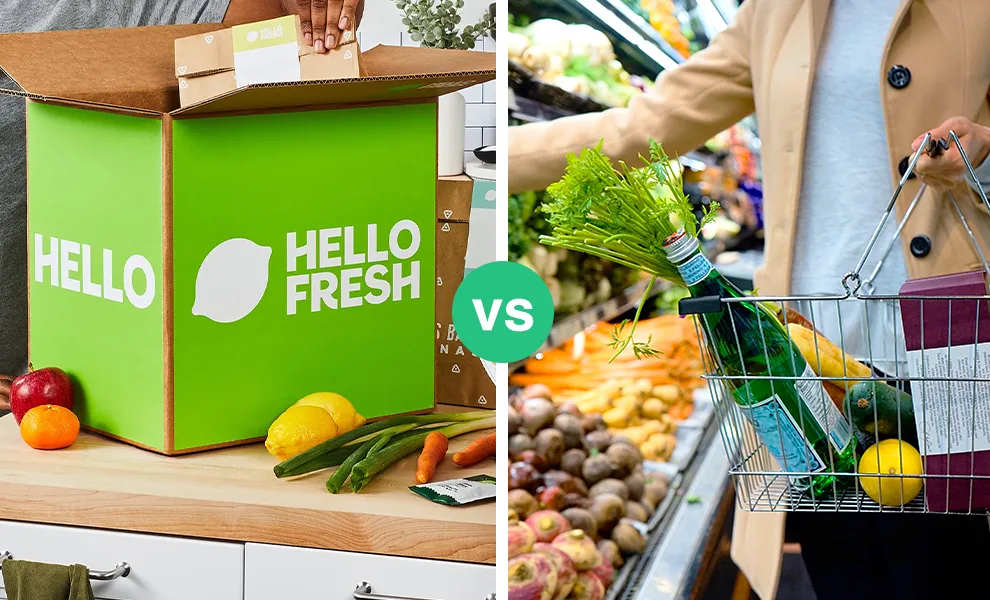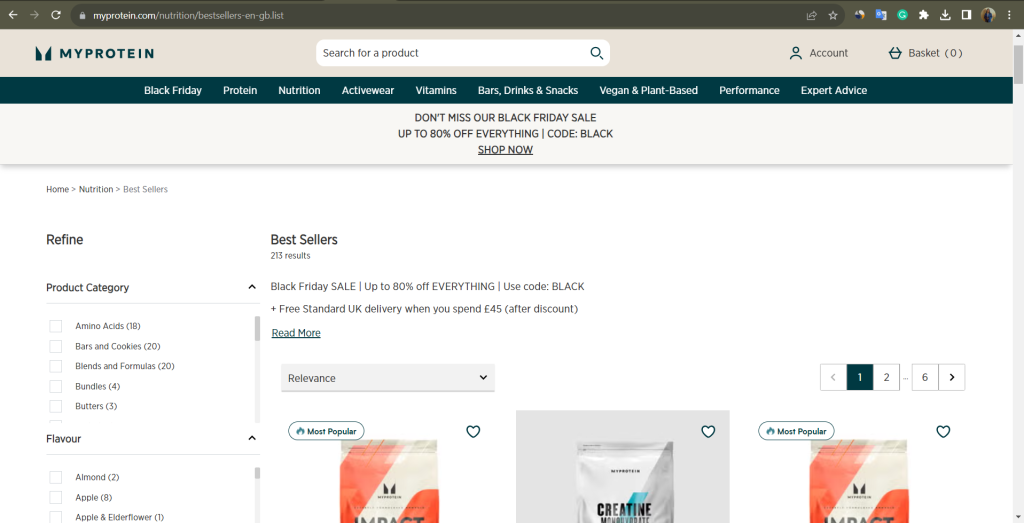In recent years, the way people approach meal preparation has undergone a significant transformation. Traditional grocery shopping, once the undisputed method of acquiring ingredients for home-cooked meals, is facing competition from convenient meal kit services like HelloFresh. In this blog post, we’ll delve into the pros and cons of HelloFresh Meals compared to the traditional grocery shopping experience. As we explore these aspects, HelloFresh Meals to ensure a balanced discussion.

HelloFresh Meals: A Game-Changer in Culinary Convenience
Pros of HelloFresh Meals:
1. Time Efficiency:
HelloFresh Meals are renowned for their time-saving convenience. Subscribers receive pre-portioned ingredients along with step-by-step recipe cards, reducing the time spent on meal planning and grocery shopping. This is a boon for individuals with busy schedules or those who find themselves pressed for time during the week.
2. Variety and Innovation:
One of the standout features of HelloFresh is the diverse range of recipes offered. Subscribers can explore new cuisines and cooking techniques without the hassle of hunting down exotic ingredients at the grocery store. HelloFresh introduces culinary innovation into home kitchens, making cooking an exciting and educational experience.
3. Reduced Food Waste:
Traditional grocery shopping often results in buying more ingredients than necessary, leading to food waste. HelloFresh provides precisely measured portions, minimizing excess and reducing the environmental impact of discarded food. This appeals to eco-conscious consumers looking to minimize their carbon footprint.
4. Convenient Delivery:
HelloFresh Meals are delivered directly to the subscriber’s doorstep, eliminating the need for a trip to the grocery store. This feature is particularly advantageous for individuals who may have mobility issues, live in remote areas, or simply prefer the convenience of having ingredients delivered to their door.
5. Recipe Perfection:
HelloFresh recipes are curated by culinary experts, ensuring a balance of flavors and nutritional content. This can be especially beneficial for individuals who are new to cooking or those looking to expand their culinary skills. The detailed instructions make the cooking process accessible to a wide range of home cooks.
Cons of HelloFresh Meals:
1. Cost Comparisons:
While the convenience of HelloFresh is undeniable, it comes at a price. Some users argue that the cost per meal is higher than purchasing ingredients at a traditional grocery store. This cost factor may be a deterrent for budget-conscious individuals or families.
2. Packaging Waste:
HelloFresh prides itself on minimizing food waste, but the same cannot be said for packaging. The individually wrapped ingredients and insulation materials contribute to a significant amount of packaging waste. This may be a concern for environmentally conscious consumers striving to reduce their overall ecological impact.
3. Limited Customization:
HelloFresh‘s pre-portioned ingredients limit the flexibility of ingredient quantities in recipes. While this eliminates the need to buy larger quantities than required, it also restricts the ability to customize recipes based on personal preferences or dietary restrictions.
Traditional Grocery Shopping: A Time-Honored Tradition
Pros of Traditional Grocery Shopping:
1. Cost Savings:
One of the most apparent advantages of traditional grocery shopping is the potential for cost savings. Bulk purchases, sales, and the ability to choose store brands over premium options can contribute to significant savings over time.
2. Complete Ingredient Control:
Traditional grocery shopping provides individuals with complete control over the ingredients they purchase. This is especially beneficial for those with specific dietary needs, allergies, or preferences. Shoppers can choose organic, locally sourced, or specialty items based on their individual requirements.
3. Reduced Packaging Waste:
Unlike meal kit services, traditional grocery shopping allows consumers to use their own reusable bags and containers, significantly reducing packaging waste. This appeals to those who prioritize sustainability and environmental responsibility.
4. Flexibility in Meal Planning:
Grocery shopping offers unparalleled flexibility in meal planning. Shoppers can buy ingredients in quantities that suit their needs, allowing for greater customization of recipes. This flexibility is ideal for individuals who enjoy experimenting in the kitchen or following unique dietary plans.
5. Immediate Access to Ingredients:
Traditional grocery shopping provides immediate access to ingredients. There’s no need to wait for a delivery, making it convenient for those who prefer spontaneity in their meal choices.
Cons of Traditional Grocery Shopping:
1. Time and Effort:
Grocery shopping demands time and effort, from creating shopping lists to navigating crowded aisles. This can be a significant drawback for individuals with busy schedules or those who simply prefer to spend their time on activities other than shopping.
2. Impulse Purchases:
The open-ended nature of traditional grocery shopping can lead to impulse purchases. While strolling through the aisles, shoppers may be tempted by sales or attractive displays, resulting in the purchase of items not originally on their list. This can contribute to overspending.
3. Meal Planning Challenges:
Some individuals find the process of meal planning and recipe selection overwhelming. Without the guidance of pre-selected recipes, it can be challenging to create a well-balanced and varied meal plan, particularly for those with limited culinary expertise.
4. Food Waste Concerns:
Purchasing ingredients in larger quantities increases the risk of food spoilage and waste. Without precise measurements for recipes, individuals may struggle to use all purchased ingredients before they reach their expiration dates.
Conclusion: Striking a Balance
In the HelloFresh Meals vs. Traditional Grocery Shopping debate, the best choice ultimately depends on individual preferences, lifestyle, and priorities. HelloFresh shines in terms of time efficiency, variety, and reduced food waste, making it an attractive option for those seeking culinary convenience. However, the higher cost and environmental impact of packaging may give some consumers pause.
On the other hand, traditional grocery shopping offers cost savings, complete ingredient control, and reduced packaging waste. It appeals to those who enjoy the process of selecting their own ingredients and value the flexibility of meal planning. However, the time and effort required, along with the potential for impulse purchases and food waste, are significant considerations.
In an ideal scenario, individuals may find a balance that suits their needs – incorporating HelloFresh for busy days or weeks and traditional grocery shopping for more relaxed culinary explorations. Ultimately, both approaches have their merits and drawbacks, and the decision between HelloFresh Meals and traditional grocery shopping hinges on personal priorities and values.




















